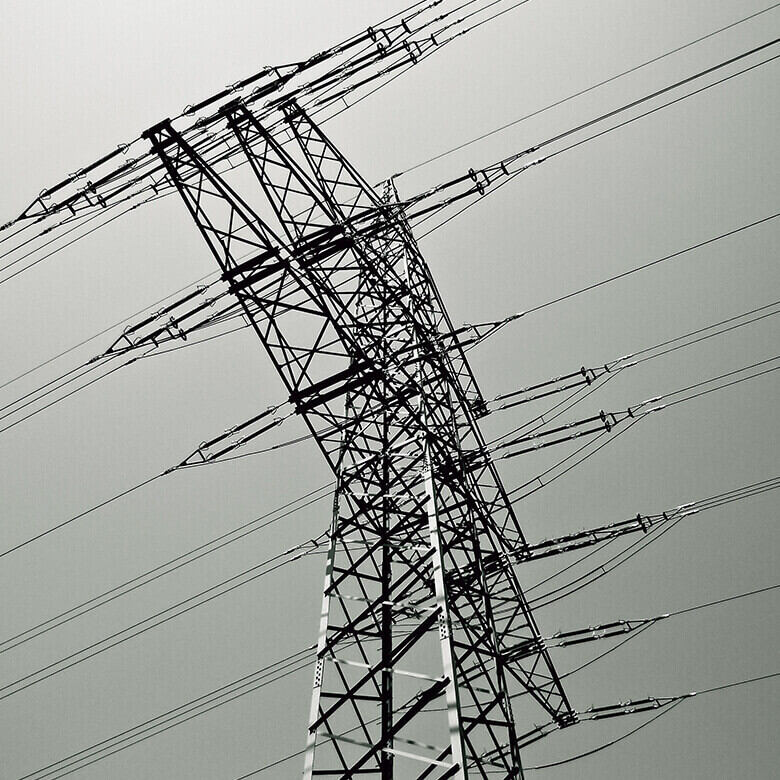Product Overview
A rack/tower UPS with line interactive topology, the CyberPower PFC Sinewave OR2200PFCRT2U provides power protection (using sine wave output) and surge protection for department servers, workgroup servers, network devices, telecom appliances, and high-end audio/video equipment requiring active PFC power source compatibility. The OR2200PFCRT2U uses Automatic Voltage Regulation (AVR) to correct minor power fluctuations without switching to battery power, which extends battery life. AVR is essential in areas where power fluctuations occur frequently. The OR2200PFCRT2U comes with a three-year warranty and a $300,000 Connected Equipment Guarantee.
- Battery Backup
Supplies power long enough for equipment to properly shut down when utility power fails. Helps prevent loss of data and minimizes the component stress caused by a hard shutdown. - Surge Protection
Diverts excess voltage away from sensitive electronic equipment during an AC power surge or power spike to prevent damage. - Data Line Protection
Prevents power surges that travel through telephone and Ethernet lines from causing damage to electronics. - Line Interactive Topology
Exists when a line interactive UPS has an auto-transformer that regulates low voltages (e.g., brownouts) and over voltages (e.g., spikes) without having to switch to battery. - Automatic Voltage Regulation (AVR)
Provides clean, consistent AC power by automatically increasing (boosting) low voltage without using battery power when incoming utility power experiences minor fluctuations. - Sine Wave Output
Provides power protection to ENERGY STAR® 6.0 systems with Active PFC power supplies. - GreenPower UPS™ Bypass Design
Is a patented design that allows utility power to bypass the UPS transformer, when AC power is stable, which reduces energy consumption, noise, and heat buildup. - Rotatable Multifunction LCD Panel
Displays immediate, detailed information on the UPS battery and power conditions, alerting users to potential problems before they can affect critical equipment and cause downtime. The rotatable panel is easily readable whether the UPS is rack mounted or standing as a tower. - Ultra Quiet Design
Minimizes noise during operation for a quieter work environment. - PowerPanel® Business Edition Software
Provides IT professionals with tools for monitoring and managing the UPS and backup power. This software offers remote management functionality. Free software download available Free software download available here.. - Three-Year Warranty
CyberPower will repair or replace a defective UPS system (including batteries) within three years of the purchase date. See warranty for details. - Connected Equipment Guarantee
CyberPower will repair or replace properly connected equipment if it is damaged by a power surge.
What’s In The Box
UPS System, User Manual, Rackmount Brackets x 2, Vertical Stands x 2, Telephone Cable, Emergency Power Off Cable (gray), PowerPanel Business Edition Software CD, USB A+B Type Cable, Warranty Registration Card
PowerPanel Business software download available here.
WARNING:
This product can expose you to chemicals including Styrene, which are known to the State of California to cause cancer, and Bisphenol A (BPA), which are known to the State of California to cause birth defects or other reproductive harm.
| General | |
|---|---|
| UPS Topology | Line Interactive |
| Energy Saving | GreenPower UPS™ Bypass |
| Input | |
| Voltage | 120 VAC |
| Input Voltage Range | 88 – 139 VAC |
| Adjustable Voltage Range | 86 – 142 VAC |
| Frequency Range | 60 Hz ± 3 Hz |
| Plug Type | NEMA 5-20P |
| Plug Style | Right Angle |
| Cord Length | 10 ft |
| Output | |
| VA | 2,000 VA |
| Watts | 1,540 W |
| On Battery Voltage | 120 VAC ± 5% |
| On Battery Frequency | 60 Hz ± 1% |
| On Battery Waveform | Sine Wave |
| Output Power Factor | 0.77 |
| Automatic Voltage Regulation (AVR) | Yes, +14% |
| Outlet Type | (2) NEMA 5-20R, (6) NEMA 5-15R |
| Outlets – Total | 8 |
| Outlets – Battery & Surge Protected | 8 |
| Overload Protection | Internal Circuitry Limiting |
| Transfer Time | 4 ms |
| Battery | |
| Runtime at Half Load | 15.5 minutes |
| Runtime at Full Load | 4.5 minutes |
| Battery Type | Sealed Lead-Acid |
| Battery Size | 12V/9Ah |
| Battery Quantity | 4 |
| Battery Voltage | 24V |
| Hot-Swappable | Yes |
| User Replaceable | Yes |
| Typical Recharge Time | 10 hours |
| Replacement Battery Cartridge | RB1290X4H (With serial numbers beginning with ‘GX9’) RB1290X4C (With serial numbers beginning with ‘GAM’ or ‘GAR’) |
| Replacement Battery Cartridge Quantity | 1 |
| Surge Protection & Filtering | |
| Surge Suppression | 1,470 J |
| Phone RJ11 / Ethernet RJ45 | 1-In, 1-Out (10/100) |
| EMI/RFI Filtration | Yes |
| Management & Communications | |
| Multifunction LCD Panel | Yes |
| HID Compliant USB Port | Yes |
| Serial Port | Yes |
| Emergency Power Off (EPO) Port | Yes |
| Cables Included | USB Cable |
| LED Indicators | Power On
Wiring Fault |
| Audible Alarms | On Battery
Low Battery Overload |
| Software | PowerPanel® Business Edition |
| Remote Management Card | None |
| Physical | |
| Form Factor | Rack/Tower |
| Rack Size | 2U |
| Dimensions – W×H×D (in) | 17.01 × 3.5 × 15.32 inches |
| Weight (lbs) | 57.2 lbs |
| Environmental | |
| Operating Temperature | 32 – 104 °F (0 – 40 °C) |
| Operating Humidity | 0 – 90% (non-condensing) |
| Maximum Operating Elevation | 0 – 10000 feet (0 – 3000 meters) |
| Storage Temperature | 5 – 113 °F (-15 – 45 °C) |
| Storage Humidity | 0 – 95% (non-condensing) |
| Maximum Storage Elevation | 0 – 50000 feet (0 – 15000 meters) |
| Audible Noise @ 1.5m | 48.5 dBA |
| On Line Thermal Dissipation | 177.5 BTU/hr |
| On Battery Thermal Dissipation | 1278 BTU/hr |
| Certifications | |
| Safety | UL 5th
cUL FCC Class A |
| Environmental | RoHS Compliant |
| Warranty | |
| Product Warranty | 3 Years Limited |
| Connected Equipment Guarantee | Lifetime |
| CEG Amount | $300,000 |

GreenPower UPS Technology: Bypass Design
GreenPower UPS™ Technology from CyberPower improves operating efficiency, reduce heat generation, and consume less power than conventional UPS models.
Our patented Bypass Design allows current to bypass the transformer and automatic voltage regulation (AVR) when utility power is normal, thus reducing energy consumption and associated costs. Because utility power functions normally most of the time, the bypass design allows for substantial energy savings. This technology also reduces heat generation, an important factor in decreasing operating costs.

Sine Wave Power
In the U.S., utility companies provide power to households and offices by distributing single phase alternating current (AC) power at a frequency of 60 Hz. Electrical power can be graphically depicted as a sine wave whereby the electrical signal alternates from +120 volts to -120 volts at a rate of 60 times per second (60 Hz). To enable more efficient operation of large, heavy equipment, utility companies provide commercial and industrial locations with three phase AC power which consists of three overlapping sine waves offset by 120 degrees.
Although utility companies strive to distribute 100% sine wave power, many factors can introduce electrical noise into the AC power signal in the form of sine wave distortions and as voltage sags, surges, spikes, or other irregularities. Sine wave power is important for the optimal functioning of sensitive desktop computers and related peripheral equipment. Without sine wave power output, microprocessor-based equipment can become inoperative or sustain damage from power signal distortions.

Active Power Factor Correction Supplies for IT Equipment
During the past thirty years, people have become more aware of the amount of energy used by IT equipment and devices. For many years, desktop computers and workstations inefficiently consumed power, partly due to the design of the power supplies which transformed AC power (from the wall outlet) to DC power (used by computers). This voltage transformation was relatively inefficient as reflected in low power factor ratings.
In 1992, the U.S. Environmental Protection Agency (EPA), in collaboration with advocates in the IT industry, developed the ENERGY STAR® program to prompt the development of energy-efficient products. Today this program is recognized as an international standard.
To comply with ENERGY STAR standards, manufacturers of desktop and workstation computers incorporate Active Power Factor Correction (Active PFC) as part of the engineering designs, enabling energy efficiencies of 95% or higher. Computers with Active PFC power supplies require sine wave AC power, as supplied by utility companies, for trouble-free operation. For this reason, sine wave UPS systems have become the best choice for backup power.
Simulated or stepped sine wave power, provided by entry-level UPS systems, may be problematic or incompatible with Active PFC devices. Sine wave power varies continuously from positive to negative. Simulated sine wave power mimics a sine wave by using a squared-off approximation. Due to this approximation, simulated sine wave power momentarily creates a zero power gap. When power is interrupted, a computer with an Active PFC power supply may not recognize incoming simulated sine wave power due to the zero output present in the approximated wave. This could cause the system to unexpectedly shut down or sustain system component stress.

Automatic Voltage Regulation
Automatic Voltage Regulation (AVR) in line interactive UPS systems stabilizes the incoming AC signal to maintain output power at a nominal 120 volts by controlling high and low voltages without resorting to battery power. This significantly increases battery life and lessens the likelihood of data loss, memory freezes, and system crashes.
How AVR Works in a Line Interactive UPS
A line interactive UPS includes an AVR autotransformer a special type of transformer designed to switch between powered coils of wire in response to variances in utility power input, thereby increasing or decreasing the magnetic field and the resulting output voltage to connected equipment.
This type of UPS tolerates undervoltage brownouts and overvoltage surges without consuming backup battery power by automatically selecting different power taps on the AVR autotransformer. During normal operation, incoming AC power bypasses the autotransformer (where voltage highs and lows are controlled) while also charging the battery. When the incoming voltage falls below the AVR range, the UPS switches to battery backup, and the DC-AC inverter circuitry is engaged. Power will continue to be supplied by the battery-inverter circuit until incoming voltage returns to the range manageable by the AVR.




















